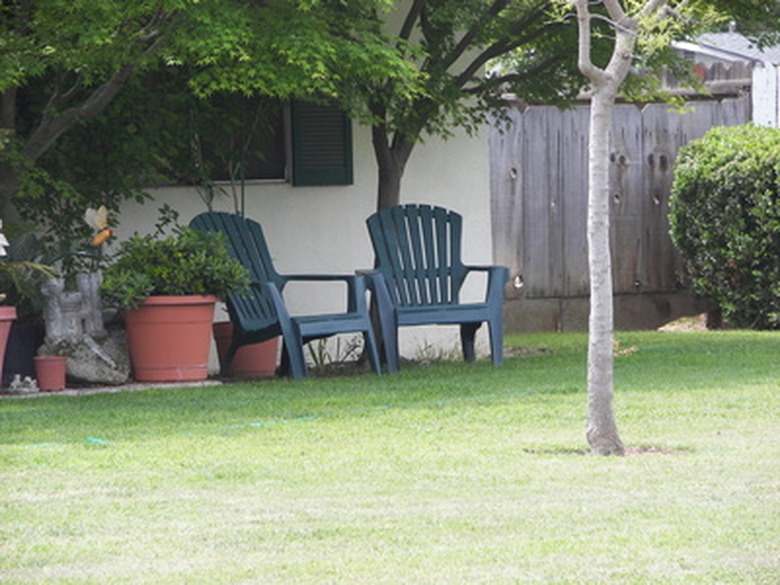How To Add Topsoil To An Existing Lawn
Things Needed
- Mower
- Aerator
- Garden (iron) rake
- Fine compost, sand or well-rotted manure
- Fertilizer spreader
New lawns on top of clay or gravel and old lawns that have grown weedy and thin are just two examples of lawns that can use rehabilitation. Unfortunately, for most of us the expense of tearing up the existing lawn, amending the soil and reseeding is out of the question. The more practical alternative is to add top dressing to the existing lawn a bit at a time for several years until your lawn has enough good topsoil to take off and crowd out weeds by its vigorous growth.
Step 1
Contact your local university extension to conduct a soil test. Tell the agent that you want to know what mix of compost, manure and sand to use and whether to add lime to top dressing.
Step 2
Mow the lawn as closely as possible without stressing the turf. The University of Wisconsin's extension recommends mowing no shorter than 2.5 inches so that grass tips may stay above the top dressing. Collect all of the leaves and grass clippings and add them to the compost pile.
- New lawns on top of clay or gravel and old lawns that have grown weedy and thin are just two examples of lawns that can use rehabilitation.
- The more practical alternative is to add top dressing to the existing lawn a bit at a time for several years until your lawn has enough good topsoil to take off and crowd out weeds by its vigorous growth.
Step 3
Level any hilly places or dips in the lawn by turning up turf and scooping out extra soil; fill dips with extra soil or top dressing. Maintain the drainage slope of the yard away from buildings toward swales and storm drains.
Step 4
Aerate the lawn with a hollow or solid core aerator. Run the aerator across the lawn and then across at right angles to open up the lawn and break up any thatch. This will leave hundreds of "plugs" of dirt covering the lawn.
Step 5
Rake and remove plugs if the topsoil is clay or infertile. Leave dark and fertile plugs on the ground to add to the topsoil. Clean up any gravel or other material thrown up by the aerator.
- Level any hilly places or dips in the lawn by turning up turf and scooping out extra soil; fill dips with extra soil or top dressing.
- Run the aerator across the lawn and then across at right angles to open up the lawn and break up any thatch.
Step 6
Drop one-quarter to one-half inch of fine black dirt, sieved compost or well-rotted manure with a fertilizer spreader. The top dressing should be very dry and fine-textured so it drops easily. Use a rigid garden rake to smooth out the top dressing until the blades of grass stand up in the new topsoil.
Step 7
Water the top dressing well and repeat the procedure each fall. The gradual addition of new topsoil gives the lawn time to adapt and absorb the new soil. You should build up a good layer in three to five years.
Tip
Complete top dressing in fall when turf can easily re-establish itself, have a winter dormant period and then begin growing in early spring. Compute the amount of top dressing you need by finding the area of your lawn in square feet. Multiply this times 144 to get the number of square inches of area. Multiply the area times the depth of the topsoil to get the cubic inches, then convert the inches to cubic feet by dividing by 1,728. Convert cubic feet to cubic yards by dividing cubic feet by 27. Aerators are available from home centers and rental centers.
